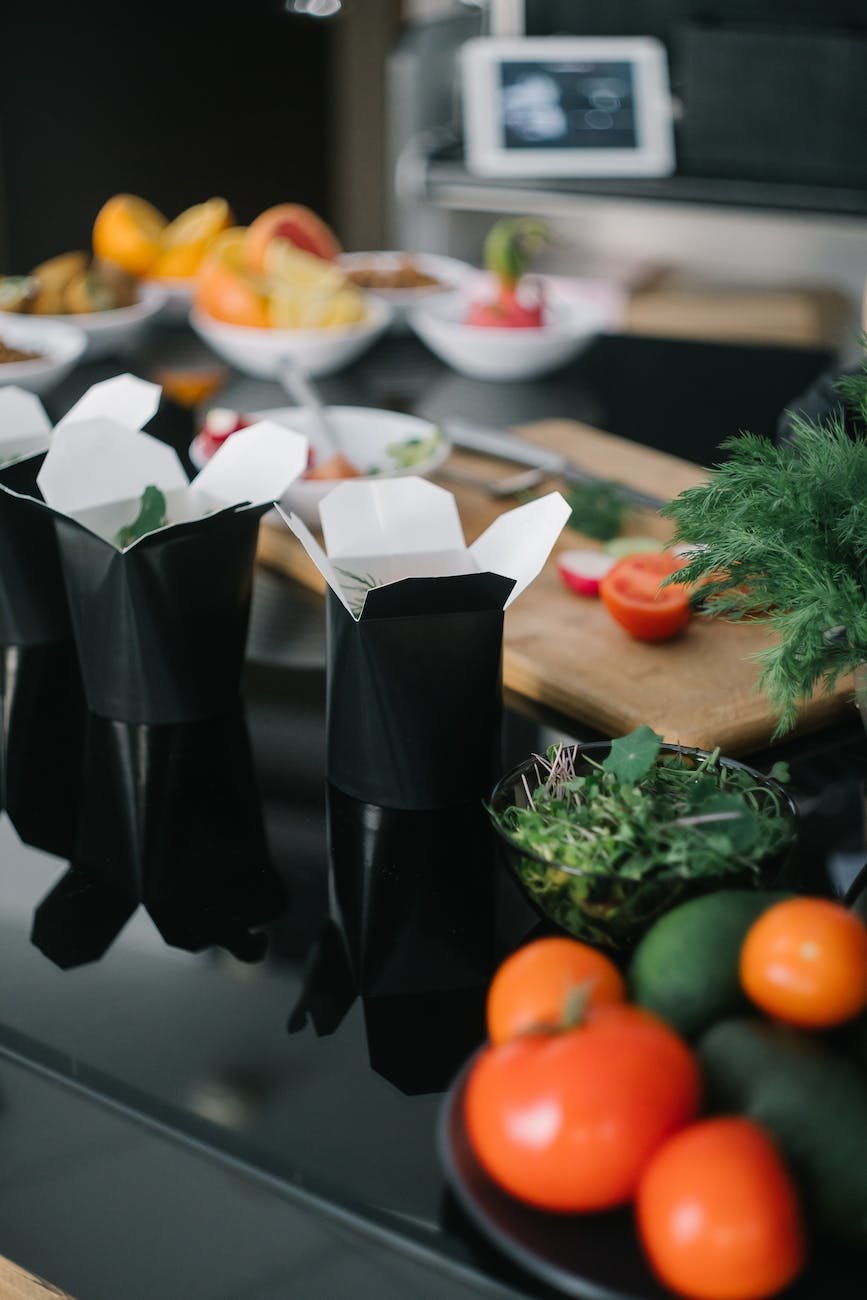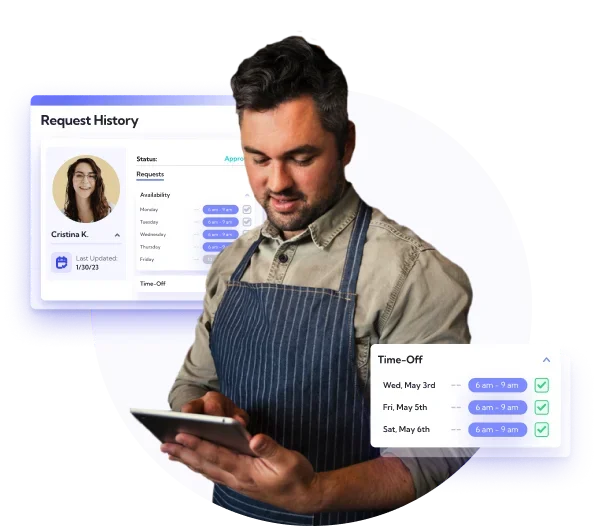When it comes to running a successful restaurant, there's no shortage of factors that contribute or detract. From menu selection and pricing to location and marketing, there are plenty of things you can do to boost sales and appeal. However, not everything is under you control as an owner. For example, one often underestimated factor that can significantly affect a restaurant's sales is the weather.
It's crucial to understand the relationship between weather and consumer behavior in the restaurant industry, as it can inform strategies and decision-making processes to better accommodate and serve customers based on different weather conditions.
As reported by the National Restaurant Association in 2012, weather is one of the primary factors contributing to fluctuations in restaurant sales. According to the report, over 90 percent of restaurant operators acknowledged that shifts in local weather conditions directly influence their sales and customer traffic. Elements such as temperature, humidity, sunshine, and rainfall can influence people's likelihood of dining out, their dining experience, and their spending habits.
In this article, we'll delve into the effect of weather factors on restaurant sales, highlighting why it's essential to comprehend this connection and exploring strategies for adapting to weather fluctuations.
Understanding Weather's Influence on Restaurant Sales
Weather affects nearly every aspect of our lives, and dining out is no exception. For restaurant owners and managers, grasping how weather can either boost or hinder sales is vital for making informed decisions and maximizing profitability. Here's why understanding this relationship is so important:
1. Impact on Outdoor Seating and Ambiance
Outdoor seating areas can significantly enhance a restaurant's charm, allowing diners to enjoy their meals in the open air while soaking in the atmosphere.
Favorable weather conditions can encourage customers to choose outdoor seating areas, enhancing their dining experience and potentially increasing sales in your restaurant. Sunny days, a gentle breeze, or a clear evening sky can create the perfect backdrop for an enjoyable meal.
Weather plays a critical role in creating a pleasant ambiance, attracting diners to opt for al fresco dining. Patios, rooftop gardens, and sidewalk tables become more attractive during mild weather.
Restaurants can optimize outdoor spaces based on weather conditions. For instance, offering shade or heating options during extreme heat or cold can extend the usability of outdoor areas, appealing to a wider range of customers.

2. Influence on Foot Traffic and Visibility
Extreme weather conditions can deter potential diners from venturing out, impacting a restaurant's foot traffic and therefore sales.
In general, there is correlation between adverse weather conditions (heavy rain, heavy snow, extreme heat) and reduced foot traffic in restaurants (at least the ones with outdoor seating), especially in the areas where rain isn’t common.
Weather can affect the visibility of the restaurant, especially during inclement conditions that discourage people from going out. Snow-covered sidewalks or torrential rain can make a restaurant less noticeable to passersby.
However, depending on location and other factors, restaurants with indoor seating may experience increased walk-ins during rainy weather as customers seek shelter. Bear in mind though that, according to a study, customers are more inclined to express dissatisfaction and are more likely to complain about their dining experience influenced by weather factors such as a rainy day, temperature, and barometric pressure.
Restaurants can counteract negative effects on foot traffic by focusing on creating an inviting indoor ambiance in the winter months and beyond. Comfortable interiors can attract diners looking to escape the weather.
3. Weather's Effect on Menu Preferences and Seasonal Trends
Weather can significantly influence what customers crave, impacting menu preferences and seasonal trends.
Weather has a substantial impact on customer cravings and preferences for specific restaurant menu items. For instance, cold weather conditions may prompt diners to seek comfort in hearty soups, while hot summer afternoons may lead them to opt for refreshing salads.
Restaurants can capitalize on these seasonal trends to cater to customer preferences and increase sales. By adjusting menus to align with changing weather patterns, they can satisfy customer desires and boost revenue.
Examples of successful menu adjustments include introducing seasonal specials or limited-time offers that reflect current weather conditions. Check out how to increase sales in your restaurant during holiday season.
4. Promoting Delivery and Takeout During Unfavorable Weather
Inclement weather often drives an increase in demand for delivery and takeout services, as customers prefer the comfort of dining at home.
Unfavorable weather conditions can increase the demand for food delivery and takeout services, especially when customers prefer staying indoors, which will affect your restaurant’s sales. Rainy days or extreme heat can make dining in less appealing.
Restaurants can effectively promote delivery and takeout options during adverse weather conditions through strategic marketing strategies and partnerships with delivery platforms.
Technology and online platforms play a significant role in facilitating this trend, making it convenient for customers to order their favorite meals without leaving their homes.

Strategies to Adapt to Weather Fluctuations as a Restaurant Business
To thrive in an industry where the weather can be an unpredictable adversary, restaurant businesses must be adaptable and proactive. Here are some strategies for weather adaptation:
Forecast-based Inventory Management
Monitor weather forecasts to anticipate changes in demand for specific ingredients and stock up accordingly. Adjust your inventory levels to align with predicted fluctuations in customer preferences, avoid food waste and reduce food costs.
Check out and download our free inventory template for restaurants.
Utilize Weather and Demand Analytics
Invest in restaurant forecasting tools that analyze historical sales data alongside weather patterns to identify correlations and trends. Use this information to make informed decisions about menu offerings, pricing, and promotions.
Lineup.ai is an innovative, user-friendly forecasting software designed for all types of restaurants. The platform utilizes historical sales data from your point-of-sale (POS) system and employs artificial intelligence to generate precise sales forecasts for the restaurant. Additionally, the algorithm takes into account relevant local external factors that are likely to influence future sales. The result is a tailored restaurant sales forecast model that can be segmented by location, online and in-store orders, or catering orders, providing comprehensive insights for effective decision-making and planning.

Optimize Menu Offerings Strategically
Offer a versatile menu that can cater to diverse weather forecasts. Introduce seasonal specialties or promotions that align with changing weather patterns. For example, offer comforting dishes during cold weather and refreshing options during hot spells.
Implement Smart Marketing Approaches
Leverage weather-related promotions to attract customers. Craft targeted marketing campaigns that align with weather trends. Promotions like "rainy day specials" or "beat the heat" offers can resonate with customers and encourage them to dine at your restaurant.
Adjust Restaurant Staff Schedule
Be strategic with holiday staffing schedules to match changes in customer traffic. Plan for increased or decreased demand based on weather forecasts to optimize employee scheduling and minimize unnecessary labor costs.
Restaurant scheduling software such as Lineup.ai removes guesswork out of scheduling process. By accurately predicting demand and sales, restaurateurs can schedule their staff for the exact hours needed. This enables efficient restaurant scheduling, ensuring the right number of staff members are present at the right times, thus optimizing customer experience.
Additionally, Lineup.ai's employee app enhances communication, allowing staff to access their schedules, request time off, and swap shifts, promoting a more seamless and efficient operational workflow.

Diversify Service Offerings
Consider offering delivery or takeout services during inclement weather to accommodate customers who prefer to dine at home. Ensure that your delivery and takeout menus are well-suited for various weather conditions.
Create Engaging Content
Keep customers informed about weather-related changes and offerings. Proactively communicate with customers about indoor seating availability, weather-adapted menus, and promotions. Use social media and newsletters to engage customers during varying weather scenarios.
Indoor and Outdoor Seating Options
If feasible, create both indoor and outdoor dining areas to cater to customer preferences during different weather conditions. Ensure that outdoor seating is equipped with appropriate coverings and heating or cooling systems to provide comfort in varying climates.
Final Thoughts
By following these strategies for adapting to weather fluctuations, restaurants can not only maintain consistent sales but also enhance customer satisfaction and demonstrate their resilience in the face of external factors. Understanding and responding to the influence of weather on restaurant sales can be a recipe for long-term success in the industry.

The team at Lineup.ai is composed of seasoned professionals who hold deep insights into the unique challenges and pain points of the restaurant industry, and are equally skilled in artificial intelligence, machine learning, and data analytics. This fusion of expertise enables Lineup.ai to create cutting-edge AI solutions specifically tailored for the restaurant sector. The technical and analytical prowess of the team, combined with a deep understanding of the unique challenges faced by restaurants, forms the cornerstone of the company's innovation. The team at Lineup.ai also excels in communicating the benefits and applications of AI and machine learning to businesses, ensuring clients fully leverage the capabilities of these solutions.
More about the author